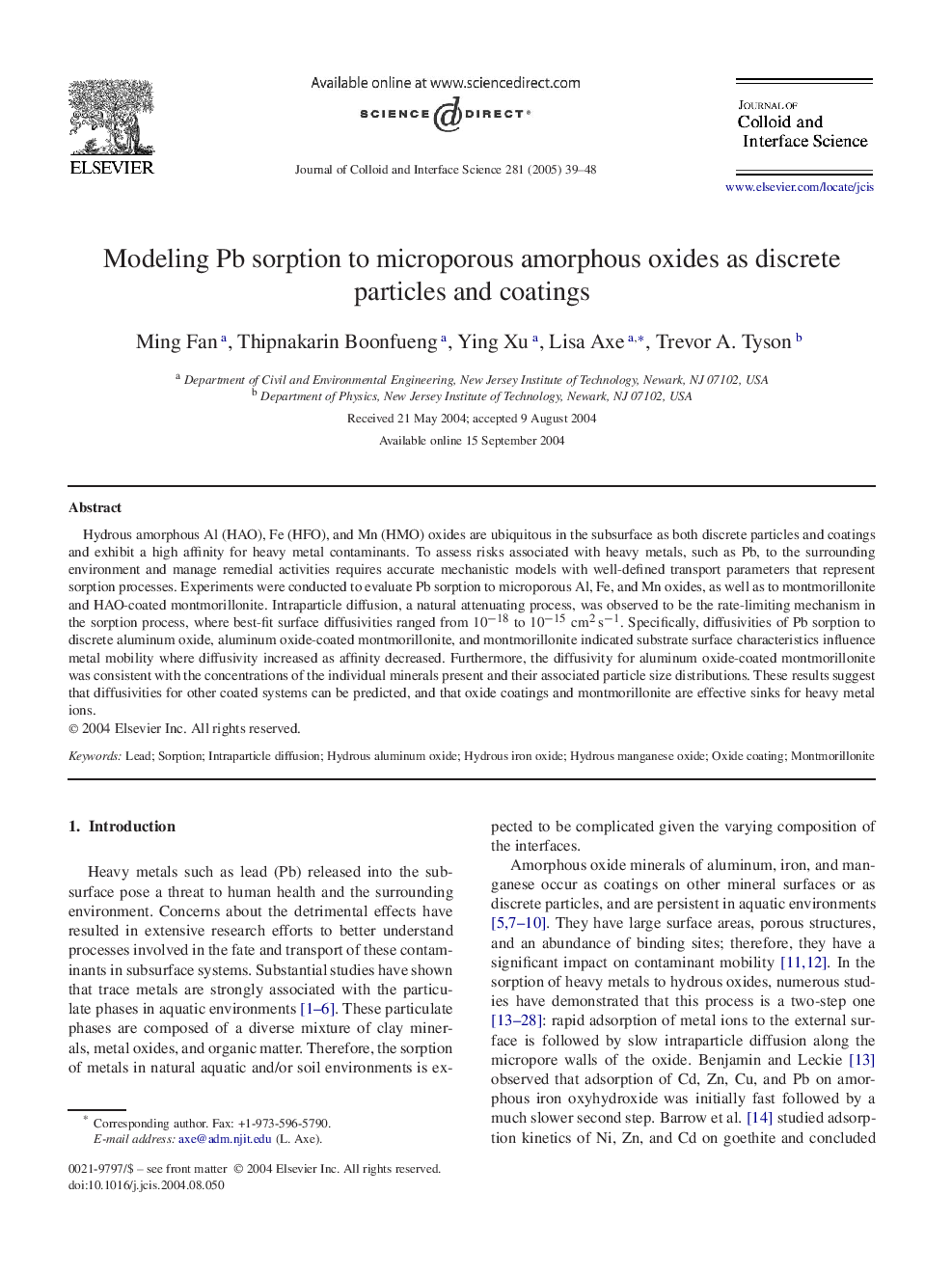| Article ID | Journal | Published Year | Pages | File Type |
|---|---|---|---|---|
| 10378498 | Journal of Colloid and Interface Science | 2005 | 10 Pages |
Abstract
Hydrous amorphous Al (HAO), Fe (HFO), and Mn (HMO) oxides are ubiquitous in the subsurface as both discrete particles and coatings and exhibit a high affinity for heavy metal contaminants. To assess risks associated with heavy metals, such as Pb, to the surrounding environment and manage remedial activities requires accurate mechanistic models with well-defined transport parameters that represent sorption processes. Experiments were conducted to evaluate Pb sorption to microporous Al, Fe, and Mn oxides, as well as to montmorillonite and HAO-coated montmorillonite. Intraparticle diffusion, a natural attenuating process, was observed to be the rate-limiting mechanism in the sorption process, where best-fit surface diffusivities ranged from 10â18 to 10â15 cm2âsâ1. Specifically, diffusivities of Pb sorption to discrete aluminum oxide, aluminum oxide-coated montmorillonite, and montmorillonite indicated substrate surface characteristics influence metal mobility where diffusivity increased as affinity decreased. Furthermore, the diffusivity for aluminum oxide-coated montmorillonite was consistent with the concentrations of the individual minerals present and their associated particle size distributions. These results suggest that diffusivities for other coated systems can be predicted, and that oxide coatings and montmorillonite are effective sinks for heavy metal ions.
Keywords
Related Topics
Physical Sciences and Engineering
Chemical Engineering
Colloid and Surface Chemistry
Authors
Ming Fan, Thipnakarin Boonfueng, Ying Xu, Lisa Axe, Trevor A. Tyson,
